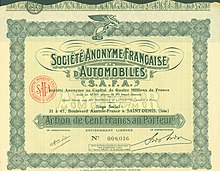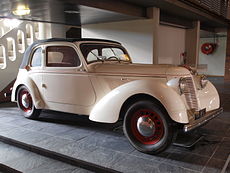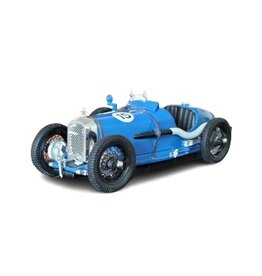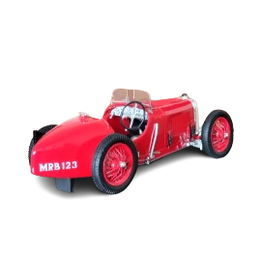AMILCAR
The original Amilcar was a small cyclecar. Designed by Jules Salomon [fr] and Edmond Moyet, it bore a striking resemblance to the pre-war Le Zèbre. The vehicle was first exhibited at the Paris Motor Show in October 1922 The business was a leading beneficiary of a cyclecar boom, prompted by a government initiative which held out the promise of a reduced rate of annual car tax, fixed at 100 francs per year, for powered vehicles weighing no more than 350 kg (dry weight, without fuel or water or such extras as a spare tyre/wheel), providing seating for no more than two people and powered by an engine of not more than 1100cC Once a vehicle exceeded these limits it ceased to be a cyclecar and was instead officially designated a voiturette.The 4-cylinder 903cc Amilcar CC appeared in 1922, with a wheelbase of just 2,320 mm (91 in). The CC subsequently became available in two further versions; the Amilcar C4 was a slightly longer sports car, while the CS, introduced in 1924, was a brisker sports version with the engine size increased to 1004 cc. The side-valve engine had splash lubrication, and came with a three-speed gearbox. The most famous model of all was the CGS "Grand Sport" of 1924; this featured a 1074 cc sv engine and four-wheel brakes. This in turn evolved into the more sporty CGSS "Grand Sport Surbaissé". These models were built under license in Germany (as the Pluto [de]) and in Austria (as the Grofri) and in Italy (as Amilcar Italiana). The marque entered automobile racing in the mid-1920s with a batch of supercharged double overhead camshaft 1100 cc six-cylinder cars that used a roller bearing crankshaft in the full racing version; these vehicles were also available with plain metal bearings, driven by famous race driver André Morel.

Financial challenges and the loss of independence

During the later 1920s the company expanded out of its original comfort zone of small economical cars: the results were mixed. The founders, Akar and Lamy, becoming less involved with the management of the business, were persuaded to conclude, in 1931, a business agreement with André Briès and Marcel Sée. Sée already knew Amilcar from the inside, having in January 1929 been dismissed from a position involved in management of the company. The early 1930s were years of economic crisis in France, and at the end of 1933 a company owned by Briès and Sée, called "Sofia" (Societe financiere pour l'automobile), took effective control of Amilcar, which nevertheless continued to function under its existing name.




From 1928 the company offered a light touring car; called the "M-Type", it featured a side-valve 1200 cc engine and was launched in 1928. It was followed by the M2, M3, and M4 versions. The M-type and its successors continued to be produced through the ensuing years of financial difficulty, offered for sale till 1935, though production probably ended in 1934. 1928 saw the introduction of a straight eight, which was built with an ohc 2.3-liter engine. This, the C8, proved unreliable, and soon disappeared with only a few hundred produced.
The acquisition of Amilcar by "Sofia" in 1933 did not in itself resolve the financial pressures. At the end of August 1934, still faced with disappointing sales volumes, the factory at Saint-Denis closed for the last time, as management struggled to save the business. A new model was clearly needed and in October 1934 the company presented the new 2-litre (12CV) Amilcar Pégase powered by a 4-cylinder ohv 2150 cc engine supplied by Delahaye. There was also a competition version of the Pégase with a 2490 cc (14CV) engine. By October 1935, the smaller Amilcar models having been discontinued, the Pégase, produced under much reduced circumstances at premises in Boulogne-Billancourt, was the only Amilcar model listed.
Another change of control
Recognising the impossibility of sustaining the Amilcar business with a single model, but unsure of how to finance or produce another, management turned to Hotchkiss which had recently taken a large shareholding in "Sofia", Amilcar's holding company. Hotchkiss had problems of their own at this time, their hugely lucrative armaments business having recently been nationalised by the left-wing Blum government, while their middle-market automobile business was under increasing pressure as volume automakers became more effective in pushing their own ranges upmarket with models such as the Peugeot 402 and the Citroën Traction. Henry Mann Ainsworth, the Automobile Director at Hotchkiss, had already been presented, by the high-profile engineer Jean-Albert Grégoire, with a promising prototype (at that stage based on an Adler chassis) for a lightweight 7CV category, small, technically advanced family car. It was agreed that the automotive businesses of Hotchkiss and Amilcar would be merged and the prototype would be developed into an Amilcar model that would become the Amilcar Compound.
The front-wheel-drive Amilcar Compound was technically advanced in design for its era, featuring a monocoque frame made of a light alloy and independent suspension all around. Its engine at launch was a four-cylinder side-valve unit of 1185 cc. The Compound's ambitious use of aluminium in its body structure, and its front-wheel-drive configuration, meant that production got off to a slow start, and although it was launched in October 1937, 584 of the 681 passenger cars produced date only from 1939, with a further 64 produced during the early months of 1940, before the German invasion of May/June 1940 effectively ended civilian automobile production in the Paris region. Production prototypes for an upgraded Compound with an OHV 1340 cc engine were running by the summer of 1939, and this version was scheduled for an October launch at the 1939 Paris Motor Show, but the motor show was cancelled and the launch was postponed – as matters turned out indefinitely – due to the intervention of war which France (and Britain) declared against Germany in early September 1939.
Production of the Amilcar was not resumed after World War II.
- AB VOLVO
- AC CARS
- ACADIAN
- ACURA
- ADLER
- AEC
- ALFA ROMEO
- ALFA ROMEO BY ABARTH
- ALFA ROMEO BY BERTONE
- ALFA ROMEO BY CARROZZERIA TOURING
- ALFA ROMEO BY CASTAGNA
- ALFA ROMEO BY COLLI CAROZZERIA
- ALFA ROMEO BY GHIA
- ALFA ROMEO By ITALDESIGN
- ALFA ROMEO by OSI
- ALFA ROMEO by PININFARINA
- ALFA ROMEO BY TOURING
- ALFA ROMEO by VIGNALE
- ALFA ROMEO BY ZAGATO
- ALLARD MOTOR COMPANY LIMITED
- ALPINE(SOCIETE DESAUTOMOBILES ALPINE SAS)
- ALVIS
- ALVIS BY VANDEN PLAS
- AMC(American Motor Company)
- AMILCAR
- AMILCAR by LA PHOCEENNE
- APRILIA
- Argo Racing Cars Ltd.
- ARMSTRONG WITHWORTH AIRPLANE COMPANY
- ART & TECH STUDIO
- ASA (Autocostruzioni Società per Azioni)
- ASTON MARTIN
- ASTON MARTIN by BERTONE
- ASTON MARTIN by BONIOLO
- ASTON MARTIN BY GRABER
- ASTON MARTIN by ITALDESIGN
- ASTON MARTIN by OGLE
- ASTON MARTIN BY VIGNALE
- ASTON MARTIN by ZAGATO
- ASTON MARTIN LAGONDA BY VIGNALE
- ASTON MARTIN LAGONDA LIMITED
- ATELIER DE CONSTRUCTION ROANNE
- ATKINSON VEHICLES LIMITED
- AUBURN AUTOMOBILE COMPANY
- AUBURN BY BEUHRIG
- AUDI
- AUDI BY DARWINPRO
- AUDI by PININFARINA
- AUSTIN MOTOR COMPANY Ltd.
- AUSTRO-DAIMLER
- AUSTRO-DAIMLER by KEIBL
- AUTOBIANCHI
- AUTOBIANCHI BY BERTONE
- AUTOBIANCHI BY PININFARINA
- AUTOBIANCHI BY ZAGATO
- AUTOMOBILI LAMBORGHINI S.p.A.
- AUTOMOBILI LAMBORGHINI SpA by CHRYSLER
- AUTOMOBILI LAMBORGHINI BY LB WORKS
- AUTO UNION
- AVIA MOTORS S.R.O.
- AVRO
- AvtoKuban
- BAE Systems AB
- BAJAJ
- BARKAS(VEB Barkas-Werke)
- BARREIROS DIESEL S.A.
- BAUER CARROSSERIE
- BAW International - Beijing Automobile Works Co., Ltd.
- BEDFORD
- BelAZ
- BELL
- BENELLI
- BENTLEY
- BENTLEY by ABBOTT
- BENTLEY by FRANAY
- BENTLEY by GRABER
- BENTLEY by MULLINER
- BENTLEY BY PININFARINA
- BENTLEY BY WENDLER
- BERLIET
- BERTONE
- BETA MOTORCYCLES
- BMC(The British Motor Corporation LTD)
- BMW
- BMW BY ALPINA
- BMW by Bertone
- BMW by DarwinPRO
- BMW by FRUA
- BMW by ITALDESIGN
- BMW BY LIBERTY WORKS
- BMW by PININFARINA
- BMW by ZAGATO
- BORGWARD
- BRISTOL CARS LIMITED
- BRITISH LEYLAND
- BRM(British Racing Motors)
- BUGATTI
- BUGATTI BY BERTELLI
- BUGATTI by VANDENPLAS
- BÜHRER TRAKTORENFABRIK AG.
- BUICK
- BUICK BY LANCEFIELD
- BUICK by PININFARINA
- BÜSSING AG
- CADILLAC(GENERAL MOTORS)
- Cadillac by ASC
- Cadillac by Derham.
- CADILLAC by EUREKA & Co.
- Cadillac by Fleetwood
- CADILLAC BY MILLER-METEOR
- CADILLAC BY PININFARINA
- CADILLAC by SUPERIOR COACH CORPORATION
- CAGIVA
- CANADIAN MILITARY PATTERN(CHEVROLET)
- CATERHAM CARS
- CATERPILLAR
- CHECKER MOTORS CORPORATION
- CHENARD & WALCKER
- CHEVROLET
- CHEVROLET BY AMERICAN CUSTOM COACHWORKS.
- Chevrolet by Bertone
- CHEVROLET by PININFARINA
- CHEVRON CARS
- CHRYSLER
- CHRYSLER BY GHIA
- ChTZ(Chelyabinsk Tractor Plant)
- CIMATTI
- CISITALIA by PININ FARINA
- CISITALIA BY PININFARINA OR VIGNALE
- CISITALIA by STABILIMENTI FARINA
- Citroën
- CITROËN by BERTONE
- Citroën by H.Chapron
- CITROËN by PININFARINA
- CIZETA-MORODOR
- COMMER
- CONDOR-WERKE AG
- CORD
- CORD BY HAYES BODY COMPANY
- COURAGE COMPETITION
- CROSLEY CORPORATION
- DACIA
- DAF
- DAIHATSU MOTOR Co.Ltd.
- DAIMLER(D)
- DAIMLER(UK)
- DAIMLER BY WILCOX
- Dallara Group S.r.l.
- DATSUN
- DB PANHARD
- DE HAVILLAND
- DE HAVILLAND BY MORRIS MOTOR COMPANY
- DELAGE(SAFAD)
- DELAGE BY AUTOBINEAU
- DELAGE by H.CHAPRON
- DELAGE FERNANDEZ & DARRIN
- DELAGE BY LETOURNEUR & MARCHAND
- DELAGE by PARTOUT
- DELAHAYE
- DELAHAYE BY CHAPRON
- DELAHAYE BY FIGONI & FALASCHI
- DELAHAYE BY GILLORE
- DELPHI INDY CAR
- Demm Motorcycles (Spa Officine Meccaniche Fratelli Daldi & Matteucci, Porretta Terme)
- Dennis Brothers LTD
- DENZEL AUTOMOBILE COMPANY
- DESOTO(CHRYSLER)
- DE TOMASO
- DE TOMASO by GHIA
- DE TOMASO by FISSORE
- DEUTSCH-BONNET(Panhard engine)
- DEUTZ-FAHR
- DEVON MOTORWORKS
- DIAMOND T
- DIFFERENT CAR MODELS
- DISNEY
- DKW
- DODGE(CHRYSLER)
- DODGE BY GHIA
- DOME Co.LTD
- Dongfeng Peugeot-Citroën Automobile Co., Ltd.
- DONKERVOORT AUTOMOBIELEN BV
- Dr.-Ing.Ulrich ESTERER GmbH & Co.KG.png
- DUCATI MOTOR COMPANY S.p.A.
- DUCKHAMS COSWORTH
- DUESENBERG
- DUESENBERG BY BOHMAN & SCHWARTZ
- DUESENBERG BY D'IETEREN
- DUESENBERG BY FIGONI
- DUESENBERG BY G.NUTTING
- DUESENBERG BY LAGRANDE
- DUESENBERG BY MURPHY
- DUESENBERG BY ROLLSON/ROLLSTON
- DUPLE COACHBUILDERS
- DV BUS & COACH
- DZERZHINSKY PLANT KIEV
- EBRO
- EDONIS
- EDSEL
- Eidgenössische Konstruktionswerkstätte
- EMW(Eisenacher Motorenwerk)
- ENFIELD
- ERF
- ERICH BITTER AUTOMODELS GmbH(BITTER)
- EUROCOPTER GROUP
- Fábrica de Automotores Utilitarios SAICF
- FACEL S.A.
- FARIZON(GEELY)
- FAW Toyota Motor Co.
- FAW-VOLKSWAGEN
- FBW(Franz Brozincevic Wetzikon)
- FENDT
- FERRARI S.p.A.
- FERRARI BY BERTONE
- FERRARI by CASTAGNA
- FERRARI BY GHIA
- FERRARI BY DROGO CARROZZERIA SPORTS CAR
- FERRARI BY MICHELOTTI
- FERRARI by MODENA DESIGN
- FERRARI BY PININFARINA
- FERRARI BY SCAGLIETTI
- FERRARI by STABILIMENTI FARINA
- FERRARI BY TOURING
- FERRARI BY VIGNALE
- FERRARI BY ZAGATO
- FFA(Flug-und Fahrzeug Werke Altenrhein)
- FIAT
- FIAT BY ABARTH
- FIAT BY BERTONE
- FIAT by CAPRERA
- FIAT BY CARROZZERIA ALFREDO VIGNALE
- FIAT by CORIASCO
- FIAT by FISSORE
- FIAT by ITALDESIGN
- FIAT BY LOMBARDI
- FIAT by PININFARINA
- FIAT BY ZAGATO
- FMC(Food Machinery Corporation)
- FODEN
- FORD BY COSWORTH
- FORD BY CRAYFORD
- FORD BY LOTUS
- FORD BY SHELBY
- FORD by ZAGATO
- FORD EUROPA
- FORDSON BY FORD MOTOR COMPANY
- FORD U.S.A.
- FORD by BERTONE
- FRAZER-NASH by GIUGIARO
- FREIGHTLINER(Daimler truck North America)
- FSO WARSZAWA
- GARELLI
- GAZ(Gorky Automobile Plant)
- GENERAL MOTORS
- GINETTA-FORD
- GMC
- GOGGOMOBIL/HANS GLAS GmbH
- GREAT WALL MOTOR
- GRIFFITH MOTOR COMPANY
- Guangzhou Xiaopeng Automotive Technology Automobile company
- Haas/Ferrari F1 Team
- HARLAND & WOLF
- HANOMAG
- HARLEY DAVIDSON
- HENDRICK MOTORSPORTS-NASCAR
- HEINKEL
- HENSCHEL & SON
- HHA(Hawker Hunter Aviation Ltd)
- HILLMAN BY ZAGATO
- HILLMAN MOTOR COMPANY
- HISPANO-SUIZA
- HISPANO-SUIZA BY FERNANDEZ & DARRIN
- HOLDEN(GENERAL MOTORS)
- HONDA by PININFARINA
- HONDA GIKEN KOGYO KABUSHIKI
- HONGQI
- HYMER CAMPERS
- HOMMELL
- HORCH
- HOTCHKISS ET CIE
- HRG ENGENIERING COMPANY
- HUDSON MOTOR CAR COMPANY
- HUMBER LIMITED
- HUMMER
- HÜRLIMANN
- HYUNDAI MOTOR COMPANY
- IAME(Industrias y Mecanicas del Estado IAME)
- IKARUS
- IMPERIAL(Chrysler)
- IMPERIAL(Crysler) BY GHIA
- IMPERIAL(Chrysler)BY LE BARON
- INNOCENTI
- INNOCENTI-LAMBRETTA
- INTERNATIONAL HARVESTER
- INVICTA BY CHARLESWORTH
- INVICTA BY TOURER
- ISO AUTOMOTOVEICOLA S.p.A.
- ISOBLOC
- ISO RIVOLTA
- ISOTTA FRASCHINI & Co
- ISOTTA FRACHINI by CASTAGNA
- ISOTTA FRASCHINI BY ZAGATO
- ITALJET
- IVECO
- ISUZU MOTORS Ltd
- JAGUAR
- JAGUAR BY BERTONE
- JAGUAR by FRUA
- JAGUAR BY GRABER
- JAGUAR BY VANDEN PLAS
- JAGUAR BY VICARAGE
- JAWA
- JEEP(FIAT CHRYSLER AUTOMOBILES)
- JENSEN MOTORS
- JETOUR
- Jiangling Motors Corporation Limited
- JLC
- JOE GIBBS RACING-NASCAR
- JUNKERS
- KAELBLE
- KAISER JEEP
- KAMAZ
- KAWASAKI
- KAZ(Kutaisi Auto Mechanical Plant)
- KENWORTH
- KhTZ(Karkivski Tractorni Zavod)
- KIEV ELECTRIC TRANSPORTATION PLANT
- KIROV ZAVOD
- KMZ(Kragnorsky Mechanical Works)
- KOENIGSEGG
- KÖPFLI
- KRAUSS MAFFEI
- KrAZ
- Gebakken. Krupp Motoren- und Kraftwagenfabriken GmbH
- KURGANMASHZAVOD
- LADA(AvtoVAZ)
- LAMBORGHINI by BERTONE
- LAMBORGHINI by ITALDESIGN
- LAMBORGHINI by PININFARINA
- LAMBORGHINI by STROSEK DESIGN GmbH & Co.KG
- LAMBORGHINI by ZAGATO
- LANCIA
- LANCIA BY ABARTH
- LANCIA by BERTONE
- LANCIA BY COLLI CAROZZERIA
- LANCIA by PININFARINA
- LANCIA BY ZAGATO
- LAND ROVER BY CUTHBERTSON
- LAND ROVER BY TICKFORD
- LAND ROVER(TATA MOTORS)
- LANZ
- LEA-FRANCIS
- LEXUS
- LEYLAND MOTORS
- LIAZ(Liderecké Avtomobilové Zavody)
- LIGIER AUTOMOBILES
- LINCOLN
- LINCOLN BY CARIBOU MOTOR COMPANY
- LOLA
- LOTUS
- MACK
- MAGIRUS-DEUTZ
- MALAGUTI
- MALANCA MOTORS SpA
- MALYSHEV FACTORY
- MAN
- MANIFATURA AUTOMOBIL TORINO
- MARCH ENGINEERING
- MARCOS ENGENIERING
- MARMON MOTOR COMPANY
- MASERATI
- MASERATI by ATL
- MASERATI BY BERTONE
- MASERATI BY CARROZZERIA FANTUZZI
- MASERATI by GHIA
- MASERATI by ITALDESIGN
- MASERATI BY PIETRO FRUA
- MASERATI by PININFARINA
- MASERATI by TOURING
- MASERATI BY ZAGATO
- MATRA
- MATRA SIMCA
- MAVERICK MOTORS
- MAYBACH(DAIMLER-BENZ)
- MAYBACH BY WAGNER-SPOHN
- MAZ(MINSK AUTOMOBILE PLANT)
- MAZDA by BERTONE
- MAZDA MOTOR CORPORATION
- MAZZANTI AUTOMOBILI
- McDonnell Douglas
- MCI(MOTOR COACH INDUSTRIES INTERNATIONAL INC.)
- McLAREN
- McLAREN HONDA F1 TEAM
- MEGATECH
- MELKUS
- MEMMINGER
- MENARDS RACING-NASCAR
- MENGERS Special Cars GmbH
- MERCEDES AMG PETRONAS F1 TEAM
- MERCEDES-BENZ
- MERCEDES BY AMG
- MERCEDES-BENZ AMG BY DARWINPRO
- MERCEDES BY ARMBRUSTER
- MERCEDES-BENZ BY CORSICA
- MERCEDES BY CRAYFORD.
- MERCEDES-BENZ BY GLÄSER KAROSSERIE
- MERCEDES-BENZ by MURPHY
- MERCEDES BY SAOUTCHIC
- MERCEDES BY WILCOX
- MERCURY(FORD MOTOR COMPANY)
- MESSERSCHMITT
- METAL MECANICA S.A.
- MEYERS MANX(VW engine)
- MINERVA by SAOUTCHIK
- MINERVA by VAN DEN PLAS
- MINI BY BMW
- MINI by RADFORD
- MG(SIAC)
- MG BY BERTONE
- MITSUBISHI MOTORS CORPORATION
- MONTESA-HONDA
- MONTEVERDI
- MORANE-SAULNIER
- MORGAN MOTOR COMPANY
- MORGAN OLSEN
- MORETTI MOTOR Co.
- MORRIS
- MORRIS BY ZAGATO
- MOTOBECANE
- MOTOBI
- MOTO GILERA S.p.A.
- MOTO GUZZI
- MOTOM
- MOTO MORINI
- MOTOR HOLDINGS
- MV AUGUSTA
- MZMA(Moskwitch)
- NAMI(Automotive Institute)
- NASH MOTOR COMPANY
- NAVISTAR INTERNATIONAL
- NEGRINI
- NEOPLAN
- NISSAN BY LIBERTY WALK
- NISSAN BY PANDEM
- NISSAN MOTORS
- NISSAN MOTORSPORT INTERNATIONAL Co.Ltd.
- NISSAN NISMO RACING TEAM
- NOBLA AUTOMOTIVE Ltd
- North American Aviation (NAA)
- Norton Motorcycle Company
- NSU
- OLDSMOBILE(GENERAL MOTORS)
- OM(Officine Meccaniche)
- Omohundro
- OPEL
- OPEL by BERTONE
- ORECA (Organisation Exploitation Compétition Automobiles)
- OSCA
- OSCA BY FISSORE
- OSCA by ZAGATO
- OSCAR MOTOR CYCLES
- OSELLA
- PACKARD
- PACKARD BY ABARTH
- PAGANI AUTOMOBILI S.p.A.
- PANHARD
- PANOZ
- PAZ(Pavlovo Bus Company)
- PEERLESS CARS Ltd.
- PEGASO
- PEGASO BY SAOUTCHIC
- PERIPOLI
- PETERBILT
- PEUGEOT
- PEUGEOT by PININFARINA
- PIAGGIO & C.SpA
- PIERCE ARROW
- PILATUS AIRCRAFT Ltd
- PLYMOUTH
- PONTIAC(GENERAL MOTORS)
- PORSCHE
- PORSCHE by BERTONE
- Porsche by Gemballa
- PORSCHE by PININFARINA
- PORSCHE BY RWB
- PORSCHE by TOP CAR DESIGN
- PORSCHE by ZAGATO
- PP SAUBER A.G.
- PRAGA
- PROTON HOLDINGS BERHAD
- PTMF
- PUBLIC/GILLET
- RAMBLER
- RAMSES AUTOMOBILES(NSU)
- RANGE ROVER BY HAMANN
- RAPID HOLDING Ltd
- R/C(RADIO CONTROL MODELS)
- RED BULL RACING
- RELIANT MOTORS
- RENAULT
- RENAULT BY GORDINI
- RENAULT SAMSUNG MOTORS
- REYNARD MOTORSPORT(Chrysler engine).
- RIGA CARRIAGE WORKS
- RIZATTA & C S.P.A
- ROCHET-SCHNEIDER
- ROLLS-ROYCE
- ROLLS-ROYCE BY BREWSTER & Co.
- ROLLS-ROYCE BY GHIA
- ROLLS-ROYCE BY HOOPER & Co.
- ROLLS ROYCE by LABOURDETTE
- ROLLS-ROYCE BY PARK WARD
- ROLLS-ROYCE BY PININFARINA
- ROLLS-ROYCE BY WILLOUGHBY
- ROMEO-MOTRON
- ROSENGART
- ROVER BY ZAGATO
- ROYAL AIRCRAFT ESTABLISHMENT(RAE)
- RUAG HOLDING Ltd
- RVR(Rigas Vagonbuves Rupnica)
- SAAB
- SAAB by BERTONE
- SAAB BY SIXTEN SASON
- SAIC-GM-Wuling Automobile
- Salmson
- SA MINERVA MOTORS
- SANTANA MOTOR
- SAURER UND BERNA
- SAVA(AUSTIN)
- SAVIEM
- SCANIA(VW AG)
- SCAMMEL LORRIES Ltd
- SCHLÜTER
- SCIMITAR BY BROOKS STEVENS
- Scuderia AlphaTauri
- SEAGRAVE FIRE APPARATUS
- SEAT BY ABARTH
- SETRA
- SHASTA TRAILER
- SHELBY
- SIATA(FIAT ENGINE)
- SIDES
- SIMCA
- SINGER VEHICLE DESIGN
- SMEAL-SPARTAN
- SOLEX
- SPADA VETTURE SPORT
- SPICE ENGINEERING
- SPYKER CARS
- SKODA AUTO
- SLOT CARS
- SLOT CAR FERRARI
- SMART
- SSC NORTH AMERICA
- STANGUELLINI
- STEYR-DAIMLER-PUCH
- STEYR WERKE AG
- SOCIEDAD ESPAGNOLA DE AUTOMOVICES DE TURISMO(SEAT).
- STUDEBAKER BROTHERS MANUFACTURING COMPANY.
- STUTZ
- STUTZ BY LANCEFIELD
- STUTZ BY OFFICINE PADANE S.p.A
- SUBARU
- SUD AVIATION
- SUNBEAM
- SUZUKI MOTOR CORPORATION
- SVARZ PLANT
- TALBOT
- TALBOT-LAGO BY SAOUTCHIC
- TATRA
- TEAM PENSKE-NASCAR
- TEODORE CARNIELLI & C.
- TERAM (Talleres Especializados Reparaciones Autos y Motores)
- TESLA,Inc.
- TESTI MOTOR
- THE BILL TOMAS CHEETAH
- THE LISTER MOTOR COMPANY Ltd.
- THE LONDON TAXI COMPANY
- THE ROVER COMPANY LIMITED
- THORNYCROFT
- TOEBEHOREN
- TOYOTA BY ARCTIC TRUCK
- TOYOTA by DarwinPRO
- TOYOTA BY THE FJ COMPANY
- TOYOTA BY JMACX
- TOYOTA GAZOO RACING
- TOYOTA MOTOR CORPORATION
- TRABANT(VEB Sachsenring Automobilwerk)
- TRIUMPH STANDART MOTOR COMPANY
- TRIDENTS CARS Ltd
- TROLZA(ZiU)
- TUCKER CORPORATION
- TVR
- TVR BY FISSORE
- Tyrrell Racing Organisation
- UAZ(YA3)
- UDI(United Defense Industries)
- UKVZ
- UNIC
- URAL AUTOMOTIVE PLANT
- VAM(Vehiculos Automotores Mexicanos)
- VAN HOOL
- VAUXHALL MOTORS
- VENTURI
- VERITAS AUTOMOBILE
- VESPA/PIAGGIO & Co S.p.A.
- VEVEY
- VgTZ
- VICKERS SUPERMARINE(AIRCRAFT)COMPANY LTD
- VOLKSWAGEN
- VOLKSWAGEN BY D'Ieteren
- VOLVO CAR CORPORATION
- VOLVO TRUCKS
- Wanderer-DKW
- WARTBURG(VEB Automobilwerk Eisenach)
- WESTERN STAR TRUCK SALES Inc.
- WILLYS JEEP
- WINNEBAGO TRAILER
- W MOTORS
- WOLSELEY MOTORS LIMITED
- YAMAHA MOTOR Co,.Ltd
- YaMZ(Yaroslavl Motor Plant)
- ZELENSIS
- Zhejiang Geely Holding Group
- ZiL
- ZIS
- ZÜNDAPP
- ZWEEFVLIEGTUIGEN(gliders)




